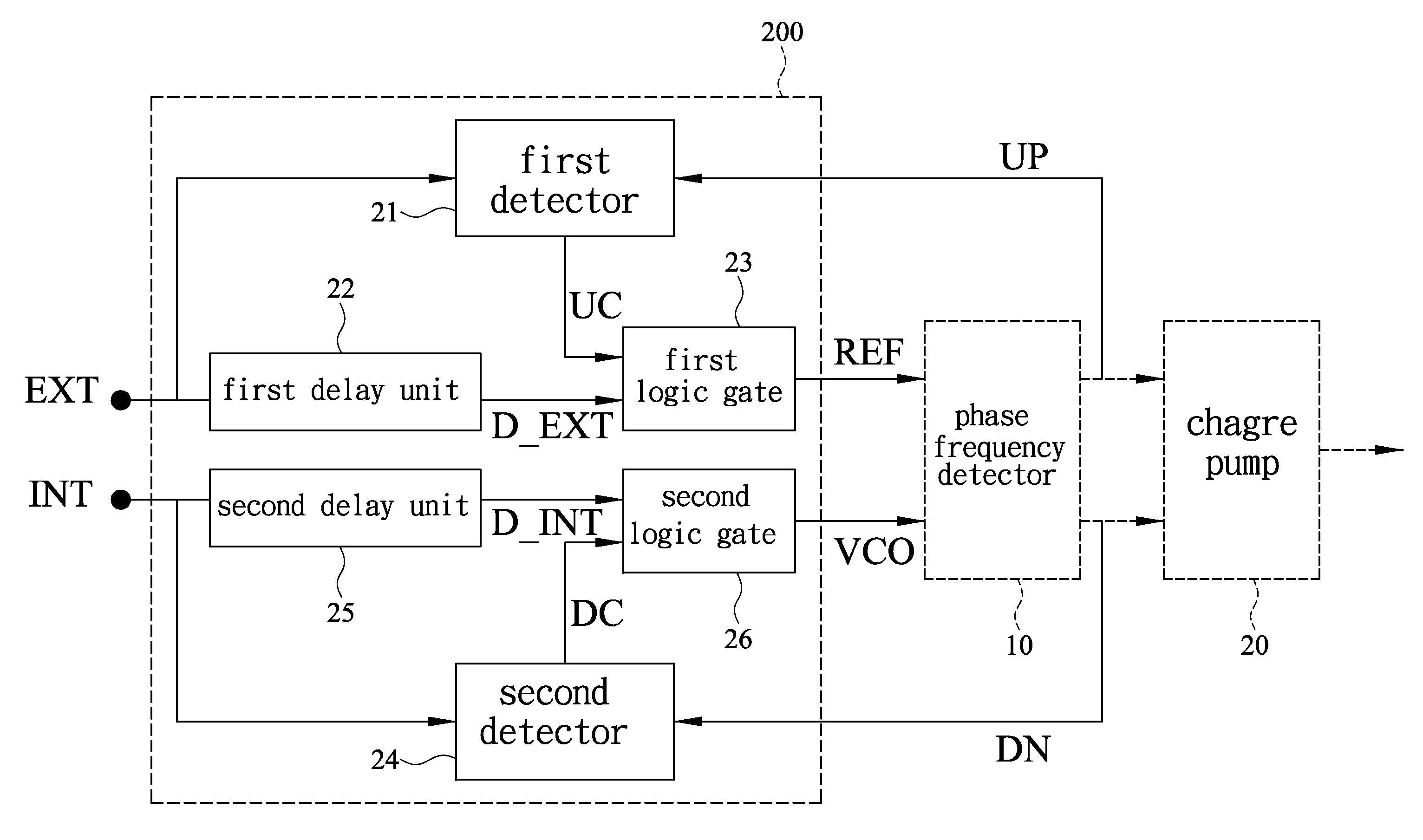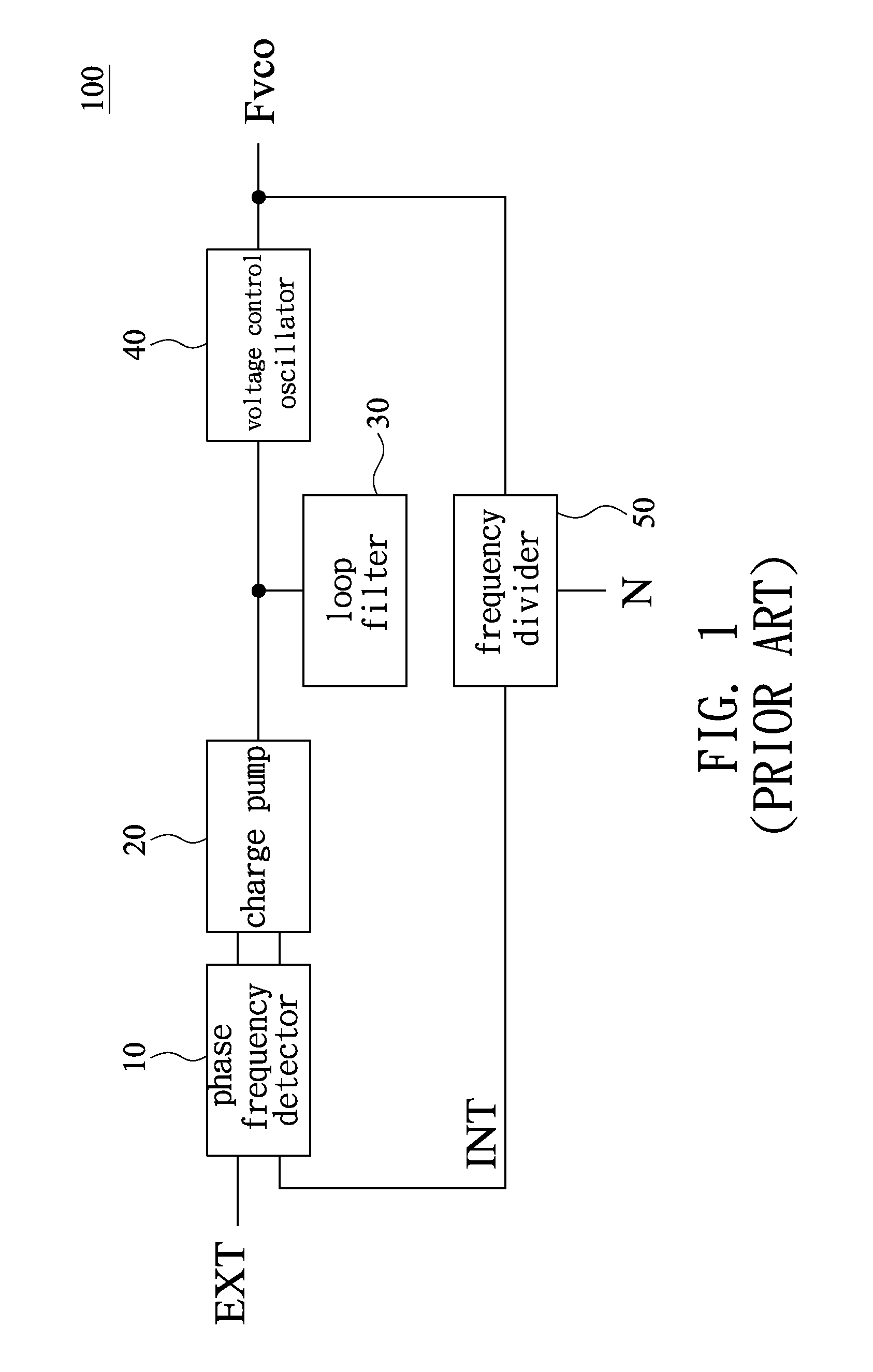Edge-Missing Detector Structure
- Summary
- Abstract
- Description
- Claims
- Application Information
AI Technical Summary
Benefits of technology
Problems solved by technology
Method used
Image
Examples
Embodiment Construction
[0029]Referring to FIG. 4 and FIG. 5, an edge-missing detector structure 200 according to an embodiment of the present invention includes a first detector 21, a first delay unit 22, a first logic gate 23, a second detector 24, a second delay unit 25, and a second logic gate 26. As shown in FIG. 4, the edge-missing detector structure 200 is used in a phase-locked loop (PLL) 100′ and coupled with a signal input end of a phase frequency detector 10. Therefore, as shown in FIG. 5, a first reference signal EXT and a first clock signal INT are processed by the edge-missing detector structure 200 before being input to the phase frequency detector 10.
[0030]When the signals input to the phase frequency detector 10 present a phase difference Δθ close to or greater than 2π, the phase frequency detector 10 generates from an output end thereof a first enable signal UP or a third enable signal DN, depending on whether the phase difference Δθ is a positive phase difference or a negative phase diff...
PUM
 Login to View More
Login to View More Abstract
Description
Claims
Application Information
 Login to View More
Login to View More - R&D
- Intellectual Property
- Life Sciences
- Materials
- Tech Scout
- Unparalleled Data Quality
- Higher Quality Content
- 60% Fewer Hallucinations
Browse by: Latest US Patents, China's latest patents, Technical Efficacy Thesaurus, Application Domain, Technology Topic, Popular Technical Reports.
© 2025 PatSnap. All rights reserved.Legal|Privacy policy|Modern Slavery Act Transparency Statement|Sitemap|About US| Contact US: help@patsnap.com



